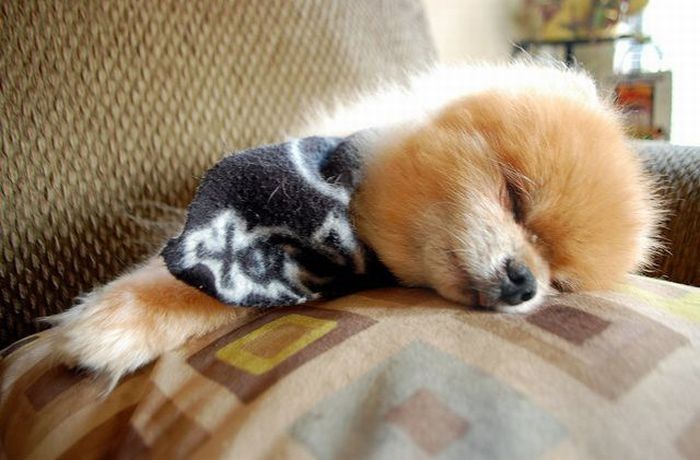|
|
Teddy And TJ Pomeranians
|
The earliest Poms were white or occasionally black, however Queen Victoria adopted a small red Pomeranian in 1888, which caused that color to become fashionable by the end of the 19th century. In modern times, the Pomeranian comes in the widest variety of colors of any dog breed, including white, black, brown, red, orange, cream, blue, sable, black and tan, brown and tan, spotted, brindle, plus combinations of those colors. The most common colors are orange, black or cream/white.
The merle pomeranian is a recent color developed by breeders. It is a combination of a solid base color with lighter blue/grey patch which gives a mottled effect. The most common base colors for the effect are red/brown or black, although it can also appear with other colors. Combinations such as brindle merle or liver merle are not accepted in the breed standard. In addition, the eye, nose and paw pad colors are different in merles, changing parts of the eye to blue and the color on the nose and paw pads to become mottled pink and black.
Pomeranians have a thick double coat, and while grooming is not difficult, breeders recommend that it is done daily because of the thickness of the coat and the constant shedding. The outer coat is long straight, and harsh in texture while the undercoat is soft, thick and short. The coat knots and tangles easily, particularly when the undercoat is being shed, which happens twice a year.
|
|









